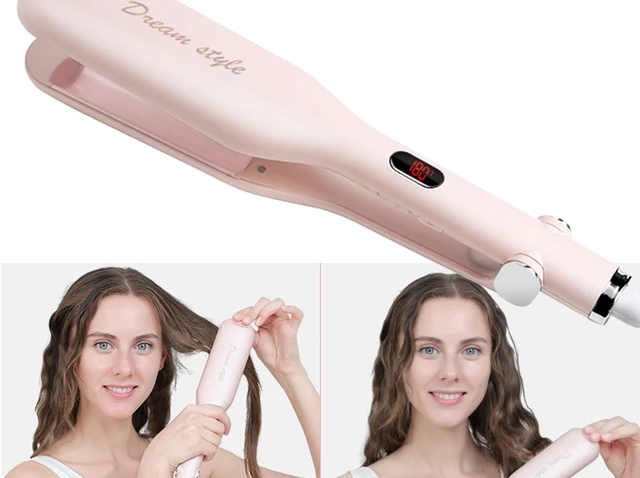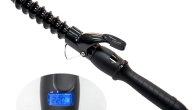
Why Won’t My Hair Hold a Curl: What Affect Curl Resilience?
Introduction:
Struggling with hair that won’t hold a curl can be frustrating, especially when you invest time and effort into styling. Understanding the various factors that affect your hair’s ability to hold a curl can help you find effective solutions and achieve those long-lasting curls you desire. This comprehensive guide explores the reasons behind curl-resistant hair and offers practical tips to enhance curl longevity.

Why Won’t My Hair Hold a Curl:
What Factors Affect Curl Resilience?
Hair Type and Texture:
How Does Hair Type Impact Curl Retention?
Your natural hair type and texture play significant roles in how well your hair holds a curl. Recognizing your hair type can help you tailor your styling approach to achieve better results.
Fine Hair:
Lack of Volume: Fine hair tends to lack the volume and thickness needed to hold a curl for extended periods. The hair’s slippery texture makes curls fall out quickly, even with the use of styling products.
Adjustments Needed: To help fine hair hold a curl, consider using lightweight volumizing products and hair sprays that provide a bit of grip. Prepping your hair with a mousse or texture spray before curling can also improve results.
Thick Hair:
Weight Issues: Thick hair, while generally more resilient, can be heavy. The weight of thick hair can pull down curls, causing them to flatten quickly.
Layering Benefits: Layering thick hair can reduce weight and make it easier for curls to hold. Additionally, using stronger hold styling products designed for thick hair can help maintain curls.
Curly or Wavy Hair:
Natural Texture: If you have naturally curly or wavy hair but struggle with holding styled curls, it might be due to uneven curl patterns or frizz. Proper preparation and styling techniques are crucial for enhancing natural curls.
Enhancing Techniques: Using curl-enhancing products, such as creams or gels, can help define and hold natural curls. Diffusing rather than air-drying often results in better curl retention.

Hair Condition:
How Does Hair Health Influence Curl Longevity?
The health and condition of your hair significantly influence its ability to hold a curl. Damaged or overly processed hair may not respond well to heat styling.
Moisture Levels:
Dry Hair: Dry hair lacks moisture and elasticity, making it less likely to hold curls. Dry hair often looks and feels brittle, which can lead to breakage during styling.
Hydration Strategies: Regular deep conditioning treatments, leave-in conditioners, and hydrating masks can improve moisture levels, making hair more pliable and capable of holding curls.
Healthy Hair Maintenance:
Avoid Over-Processing: Frequent coloring, bleaching, or chemical treatments can weaken hair, affecting its ability to hold a curl. Minimize heat exposure and use protective products during styling.
Trimming Regularly: Regular trims help remove split ends and keep hair healthy, enhancing its responsiveness to styling and ability to hold curls.

Product Buildup:
Residue Issues: Product buildup from hair sprays, gels, oils, and other styling products can weigh hair down and prevent curls from forming properly.
Clarifying Shampoos: Using a clarifying shampoo once a week can remove product buildup, allowing your hair to curl more easily and maintain those curls longer.
Heat Styling Techniques:
How Does Your Curling Method Affect Curl Durability?
The techniques you use for curling your hair, including the tools and products, have a significant impact on curl durability.
Choosing the Right Tool:
Curling Iron vs. Wand: Curling irons with clamping mechanisms can create more defined curls, while curling wands offer a more natural, beachy wave. The choice of tool depends on the curl style you desire.
Barrel Size: The size of the curling iron or wand barrel also matters. Smaller barrels produce tighter curls that last longer, while larger barrels create looser waves that may fall out more quickly.
Heat Settings:
Temperature Control: Using the right temperature for your hair type is crucial. Fine hair may require lower heat settings (300-350°F), whereas thick or coarse hair might need higher temperatures (350-400°F). Too much heat can damage hair, while too little may not effectively create the curl.
Heat Protection: Always use a heat protectant spray or serum to shield your hair from heat damage. This helps maintain hair health and enhances curl longevity.

Curling Technique:
Sectioning: Divide your hair into small, manageable sections before curling. This ensures even heat distribution and more consistent curls.
Curling Direction: Curl hair away from your face to create a more natural, flattering look. Alternating the direction of the curls can add volume and texture.
Hold Time:
Effective Timing: Hold the curling iron or wand in place for about 10-15 seconds per section. Holding for too long can damage hair, while too short may not create a lasting curl.
Pinning Curls: After curling each section, pin the curl in place with a hair clip or bobby pin until it cools. Allowing curls to cool in their coiled shape helps set them, resulting in longer-lasting curls.
Styling Products:
How Can Product Choice and Application Enhance Curl Retention?
The products you use and how you apply them can significantly affect your hair’s ability to hold a curl.
Pre-Styling Products:
Volumizing Mousse: Apply a volumizing mousse to damp hair before blow-drying. This adds texture and grip, making it easier for curls to form and stay in place.
Texture Sprays: Texture sprays or sea salt sprays applied to dry hair can enhance grip and add definition to curls, particularly for fine or slippery hair.
Styling Products:
Curl Defining Creams: Curl defining creams or curl enhancers can help manage frizz and maintain curl shapes, especially for naturally curly or wavy hair.
Heat Protectants: Using heat protectants is essential to prevent damage from styling tools. Look for products that also provide hold or texture.
Finishing Products:
Hairspray: A light mist of hairspray can set curls without making them stiff. Choose a flexible hold hairspray to maintain movement and bounce.
Serums and Oils: Use serums or lightweight oils sparingly to add shine and reduce frizz. Applying too much can weigh down hair and undo curls.

Environmental Factors:
How Do Weather and Humidity Impact Curl Holding Ability?
External factors such as weather and humidity can also influence your hair’s ability to hold curls. Being aware of these can help you take steps to mitigate their effects.
Humidity:
Moisture Impact: High humidity levels introduce moisture to the hair, causing curls to fall out and hair to frizz. Humidity-resistant styling products can help.
Anti-Frizz Solutions: Use anti-humidity sprays or serums to create a barrier against moisture, helping curls stay intact longer.
Weather Conditions:
Seasonal Changes: Cold weather can cause hair to lose moisture, making it harder to hold curls, while extreme heat can lead to frizz and flat curls.
Adapted Hair Care: Adjust your hair care routine seasonally to combat these effects. Moisturizing treatments in winter and anti-frizz products in summer can make a significant difference.
Lifestyle and Routine:
How Does Your Daily Routine Affect Curl Retention?
Your daily habits and lifestyle choices can impact how well your hair holds curls.
Hair Cleanliness:
Freshly Washed Hair: Curls might not hold well in freshly washed hair, which can be too soft and slippery. However, very oily hair can weigh down curls.
Second-Day Styling: Curls often hold better on second-day hair. If washing is necessary, consider using dry shampoo to add texture before curling.
Sleeping Habits:
Protective Styles: Sleeping with your hair in a loose braid or bun can help preserve curl patterns overnight. Using a silk or satin pillowcase reduces friction and frizz.
Touch Ups:
Morning Refresh: Using a curling wand to touch up curls in the morning can help maintain your style. Spritzing with water or a curl refreshing spray can also reinvigorate curls.
Conclusion
Understanding why your hair won’t hold a curl involves considering various factors such as hair type, condition, preparation techniques, and product usage. By addressing each of these aspects, you can enhance your curl-holding capabilities and achieve long-lasting, beautiful curls. From selecting the right tools and products to adjusting your styling and care routines, these insights will help you transform your hairstyling experience and enjoy more resilient, enduring curls.











